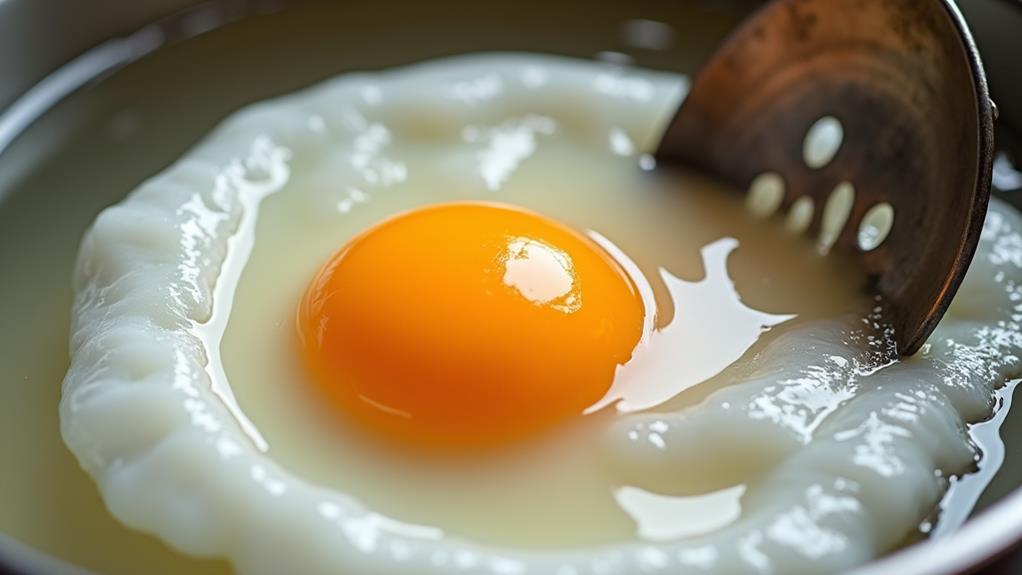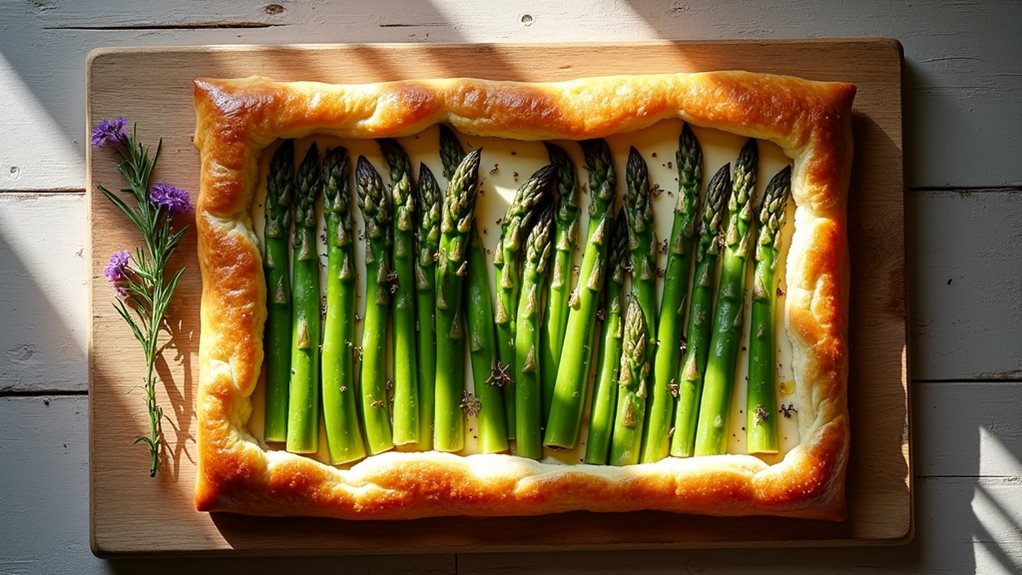To master boiling and poaching, you'll need to avoid common pitfalls that can ruin your dishes. Start by controlling temperature accurately, using a reliable thermometer to maintain the right heat for your cooking method. Don't overlook timing; each ingredient has its optimal cooking duration. Ensure you're using enough liquid to fully submerge your food, and season properly to enhance flavors. Avoid overcrowding your pot, which can lead to uneven cooking. Be careful not to overboil or mishandle delicate foods, and choose the right equipment for the job. By addressing these key areas, you'll be well on your way to culinary success.
Improper Temperature Control
One of the most common pitfalls in boiling and poaching is improper temperature control. When you're aiming for culinary perfection, mastering heat distribution is crucial. Temperature fluctuations can significantly impact your results, turning a potentially delicious dish into a disappointing outcome.
To avoid this pitfall, invest in a reliable thermometer and monitor your cooking liquid closely. For boiling, maintain a steady 212°F (100°C) at sea level, adjusting for altitude as needed. Poaching requires gentler heat, typically between 160°F and 180°F (71°C to 82°C).
Be mindful of hot spots in your pot, which can create uneven cooking. Stir occasionally to promote consistent heat distribution.
Don't rely solely on visual cues like bubbles; they can be misleading. Instead, use your thermometer to confirm the exact temperature. Remember, different ingredients may require slight adjustments. For delicate items like eggs or fish, lower temperatures often yield better results.
Overlooking Timing Importance
While mastering temperature control is vital, it's equally important to pay attention to timing when boiling and poaching. Overlooking this crucial aspect can lead to overcooked, rubbery eggs or tough, stringy meat. To elevate your culinary skills, you'll need to incorporate advanced timing techniques into your cooking schedules.
Start by familiarizing yourself with the optimal cooking times for various ingredients. For instance, soft-boiled eggs typically require 3-4 minutes, while medium-boiled eggs need 5-7 minutes. Poaching fish fillets usually takes 8-10 minutes, depending on thickness. Create a personalized reference chart to keep these timings at your fingertips.
Next, invest in a reliable kitchen timer or use your smartphone's app to track multiple items simultaneously. This precision will help you achieve consistent results across different dishes.
Consider using a sous-vide method for poaching, which allows for precise temperature and timing control, resulting in perfectly cooked food every time.
Inadequate Liquid Levels
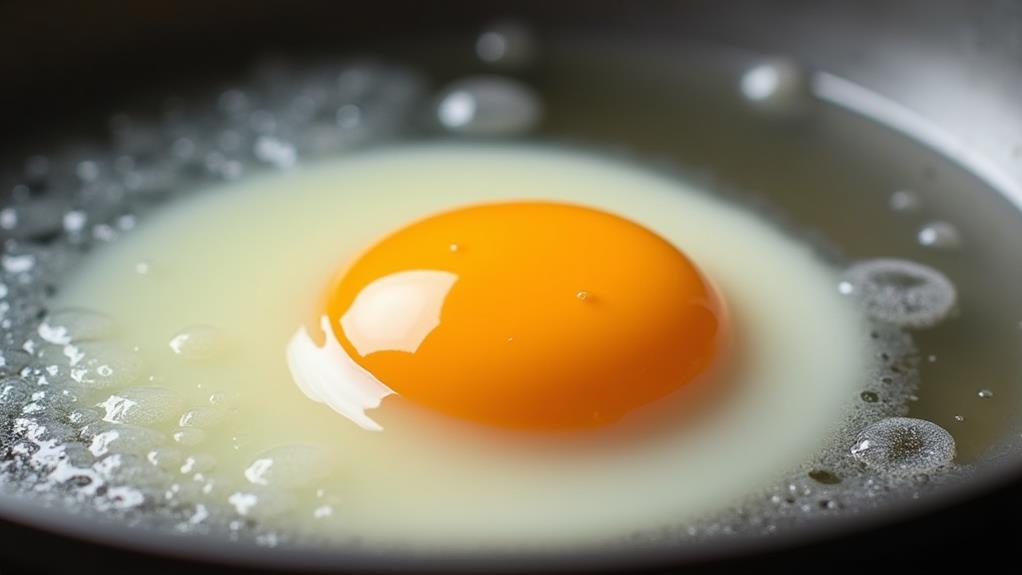
When boiling or poaching, you'll find that using too little water can lead to uneven cooking and potentially scorched food.
Insufficient cooking medium not only affects the texture of your dish but also impacts the overall flavor, as there's less liquid to impart taste and maintain moisture.
To avoid these issues, always ensure you have enough water or liquid to fully submerge your ingredients, allowing for proper heat distribution and consistent cooking throughout the process.
Too Little Water
A common mistake in boiling and poaching is using insufficient liquid. When you don't have enough water in your pot, you're compromising the cooking process and potentially ruining your dish. Adequate water volume is crucial for maintaining consistent temperature and ensuring even cooking throughout your ingredients.
Insufficient liquid affects boiling efficiency, leading to longer cooking times and uneven results. You'll find that food at the bottom of the pot may overcook while the top remains undercooked. To avoid this, always ensure your ingredients are fully submerged, with enough extra water to account for evaporation during the cooking process.
For optimal results, aim for a water-to-food ratio of at least 3:1 for most boiling applications. When poaching, use enough liquid to cover your ingredients by at least an inch.
Remember, different foods absorb varying amounts of water, so adjust accordingly. For example, pasta and rice require more liquid than vegetables or eggs.
Insufficient Cooking Medium
Building on the importance of proper water levels, let's explore the concept of insufficient cooking medium more broadly. When boiling or poaching, it's crucial to have enough liquid to fully submerge your ingredients. This applies not only to water but also to various cooking medium types, such as broths, wines, or milk.
Insufficient liquid can lead to uneven cooking, scorching, and inadequate flavor infusion.
To ensure you're using the right amount of cooking medium, consider these key points:
- Calculate the liquid-to-ingredient ratio based on the recipe or food type.
- Account for evaporation during longer cooking times by adding extra liquid.
- Use a pot or pan that allows for proper submersion without overcrowding.
Neglecting Proper Seasoning
When it comes to seasoning your boiled or poached dishes, timing is crucial, especially with salt.
You'll want to add salt early in the cooking process for dishes like pasta or vegetables, allowing it to penetrate the food, while for proteins like eggs or fish, it's often best to salt the cooking liquid instead.
Don't limit yourself to salt alone; consider incorporating herbs, spices, or aromatic vegetables into your cooking liquid to infuse your food with complex flavors.
Salt Timing Matters
Seasoning your boiling or poaching liquid isn't just about adding flavor; it's about timing too. When you're experimenting with salt types and seasoning techniques, remember that the moment you introduce salt can significantly impact your dish's outcome.
For optimal results, consider these key points:
- Early seasoning: Adding salt at the beginning of the cooking process allows it to dissolve fully and penetrate the food, enhancing flavor from within.
- Mid-cooking adjustment: Taste and adjust seasoning halfway through cooking to fine-tune the flavor profile.
- Final touch: A sprinkle of finishing salt just before serving can elevate the dish with a burst of texture and flavor.
Different salt types behave uniquely in various cooking scenarios. Kosher salt, with its larger crystals, dissolves slowly and is ideal for early seasoning. Fine sea salt disperses quickly, making it perfect for mid-cooking adjustments.
When poaching delicate items like eggs or fish, use a gentler hand with seasoning to avoid overpowering the natural flavors. Remember, you can always add more salt, but removing excess is nearly impossible.
Master the art of salt timing, and you'll revolutionize your boiling and poaching game.
Seasoning Beyond Salt
Beyond the realm of salt lies a world of seasoning possibilities that many home cooks overlook. When boiling or poaching, you're not limited to just sodium chloride; there's a vast array of flavors waiting to be explored.
For inspiration, consider Harvest Vegetable Soup as an example of how seasonal vegetables can impart unique flavors to your cooking. Consider herb infusions to elevate your dishes: add sprigs of thyme, rosemary, or bay leaves to your cooking liquid for a subtle yet impactful taste enhancement.
Don't forget about the power of aromatics like garlic, onions, or ginger to infuse depth into your boiled or poached creations.
Flavor balancing is key to achieving culinary excellence. Experiment with acidity by adding a splash of vinegar or lemon juice to brighten your dish. Incorporate umami-rich ingredients like mushroom stems or kombu seaweed to round out the flavor profile.
For a touch of sweetness, try a drizzle of honey or a pinch of sugar. Remember, seasoning isn't just about taste; it's about creating a harmonious blend of flavors that complement your main ingredient.
Overcrowding the Pot
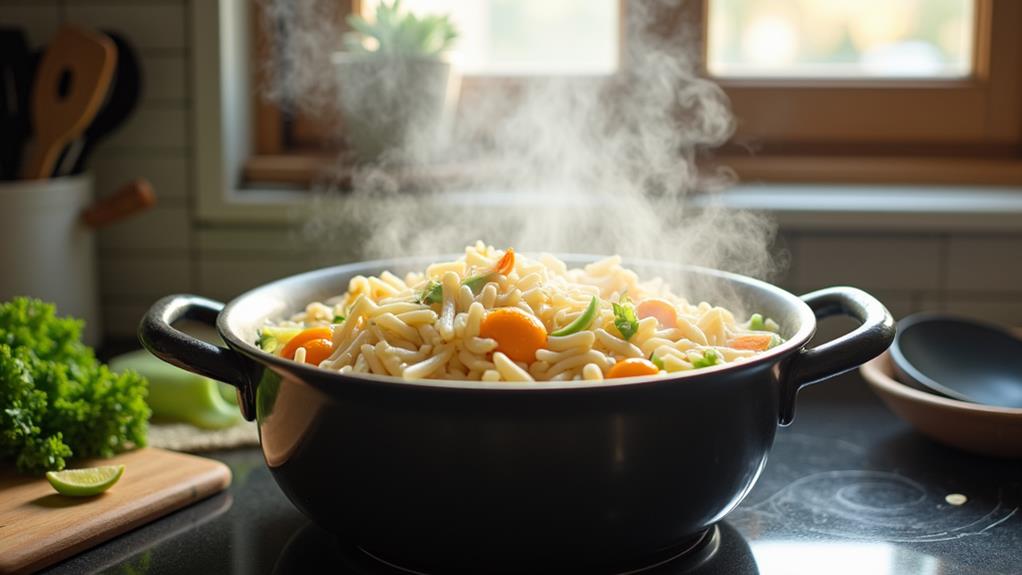
Tempted by efficiency, many cooks fall into the trap of overcrowding the pot when boiling or poaching. This seemingly time-saving shortcut can lead to subpar results and compromise the quality of your culinary creations. Understanding the importance of proper pot size and ingredient spacing is crucial for achieving optimal cooking outcomes.
When you overcrowd a pot, you're essentially creating an environment where ingredients compete for heat and space. This competition results in:
- Uneven cooking, with some items undercooked while others are overdone
- Reduced water circulation, leading to inconsistent temperatures throughout the pot
- Extended cooking times, potentially altering the texture and flavor of your ingredients
To avoid these pitfalls, choose a pot size that allows your ingredients to move freely. As a rule of thumb, aim for at least 2 inches of space between items and the pot's sides.
This extra room ensures proper water circulation, promoting even cooking and maintaining the integrity of each ingredient. By respecting the physics of boiling and poaching, you'll elevate your culinary skills and consistently produce dishes that showcase your innovative approach to cooking.
Residue Management
As you boil and poach various ingredients, you'll inevitably encounter residue buildup in your pot. This residue can affect the flavor of future dishes and compromise the longevity of your cookware. To maintain optimal cooking conditions, it's crucial to implement effective residue removal techniques and cleaning strategies.
After each use, allow your pot to cool slightly before tackling the residue. For stubborn buildup, fill the pot with hot water and a splash of vinegar, then bring it to a boil. This natural cleaning method will loosen most residues, making them easier to remove.
For tougher cases, create a paste using baking soda and water, apply it to the affected areas, and let it sit for 15 minutes before scrubbing.
Invest in a high-quality, non-abrasive scrubber to protect your pot's surface while effectively removing residue. For copper or stainless steel pots, consider using specialized cleaners designed to restore shine and remove tough stains.
Overboiling Ingredients
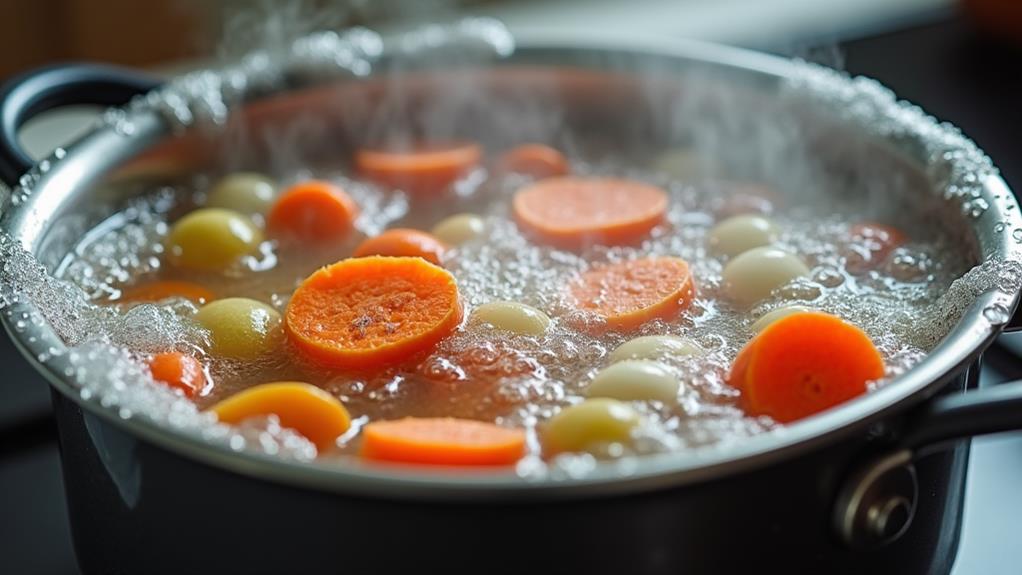
When you're engrossed in other kitchen tasks, it's easy to lose track of your boiling pot. Overboiling ingredients can lead to significant consequences, affecting both the taste and texture of your dish.
To avoid these pitfalls, it's crucial to understand the overboiling methods and their impacts on various foods.
Overboiling consequences can manifest in different ways, depending on the ingredient:
- Vegetables: Lose their vibrant color, become mushy, and leach essential nutrients into the water.
- Pasta: Turns soggy, loses its al dente texture, and can become a gummy mess.
- Eggs: Develop a rubbery texture and often form an unappetizing gray ring around the yolk.
To prevent overboiling, set a timer and stay vigilant. Keep in mind that different ingredients require varying cooking times.
For delicate items like eggs or tender vegetables, consider using a gentle simmer instead of a rolling boil.
Experiment with alternative cooking methods, such as steaming or blanching, to preserve nutrients and texture.
Incorrect Simmering Techniques
Mastery of simmering is essential for achieving perfectly cooked dishes, yet many home cooks stumble with incorrect techniques. One common mistake is maintaining a constant high heat, which can lead to overcooked, tough food. Instead, you'll want to start with a higher temperature to bring the liquid to a simmer, then reduce the heat to maintain gentle bubbling. Proper temperature adjustments are crucial for successful simmering.
Another error is overcrowding the pot, which can cause uneven cooking and temperature fluctuations. To avoid this, ensure there's enough space for the liquid to circulate freely around the ingredients.
Additionally, neglecting to skim the surface of excess foam or impurities can result in cloudy broths or sauces. Regular skimming is a key aspect of proper simmering techniques.
Lastly, don't rush the process. Simmering is a slow cooking method that allows flavors to develop and ingredients to tenderize. Resist the urge to increase the heat or shorten cooking times.
Mishandling Delicate Foods

Delicate-food handling requires finesse and attention to detail. When boiling or poaching fragile ingredients, you're walking a fine line between perfectly cooked and ruined.
To master delicate ingredient handling and ensure food texture preservation, consider these crucial points:
- Temperature control: Maintain a gentle simmer, not a rolling boil. Excessive heat can break down delicate proteins and destroy textures, similar to how the slow enhancement of flavors in dishes like Slow Cooker Chili Con Carne requires careful attention to cooking times.
- Timing precision: Set a timer and stay vigilant. Even a minute too long can mean the difference between silky and rubbery textures.
- Proper utensil use: Opt for slotted spoons or spider strainers to remove delicate items gently from the liquid.
Equipment Selection Errors
When boiling or poaching, you'll want to avoid two common equipment selection errors that can undermine your cooking efforts.
First, choosing a pot that's too small or too large for your ingredients can lead to uneven cooking, overcrowding, or excessive water usage.
Second, using utensils made from materials that react with acidic foods or scratch non-stick surfaces can compromise both the flavor of your dish and the longevity of your cookware.
Choosing Unsuitable Pot Sizes
For successful boiling and poaching, selecting the right pot size is crucial. Many home cooks underestimate the importance of pot size and shape, leading to suboptimal results.
When you choose a pot that's too small, you'll face several challenges:
- Overcrowding: Ingredients need space to move freely, ensuring even cooking and proper heat distribution.
- Boil-overs: A small pot filled to the brim is prone to spilling over, creating messes and potential safety hazards.
- Uneven cooking: Limited space can cause ingredients to stack, resulting in inconsistent cooking times and textures.
Conversely, using an oversized pot can be equally problematic. It may require excessive water, leading to longer heating times and increased energy consumption.
Additionally, delicate items like eggs or fish might break apart in a too-large vessel due to excessive movement.
To innovate your cooking process, consider investing in a set of pots with varying sizes and shapes. This approach allows you to match the pot to your specific needs, whether you're poaching a single egg or preparing a large batch of pasta.
Ignoring Proper Utensil Materials
Beyond pot selection, the materials of your cooking utensils play a key role in boiling and poaching success. When it comes to utensil selection, you'll want to consider both functionality and material durability. Opt for heat-resistant materials like silicone, stainless steel, or high-quality wood that won't warp or melt when exposed to high temperatures.
These materials also prevent unwanted flavors from leaching into your food. Avoid using plastic utensils, as they can melt and contaminate your dishes. Instead, invest in long-handled spoons and slotted spoons made of stainless steel or silicone for stirring and removing food from boiling water.
For poaching, a spider skimmer or mesh strainer is invaluable for gently lowering and retrieving delicate items like eggs or fish.
Don't overlook the importance of thermometers in your utensil arsenal. A reliable instant-read thermometer helps you monitor water temperature precisely, ensuring optimal results for different poaching techniques.
Frequently Asked Questions
Can I Reuse Water From Boiling Vegetables for Other Cooking Purposes?
You can definitely repurpose vegetable boiling water! It's a game-changer for creating nutrient-rich vegetable broth. You'll retain valuable vitamins and minerals while adding depth to your dishes. It's an innovative way to maximize flavor and reduce waste.
How Do I Prevent Eggs From Cracking While Boiling Them?
To revolutionize your egg preparation and cracking prevention, try this: You'll want to temper your eggs by letting them reach room temperature first. Then, gently lower them into already-boiling water using a slotted spoon. It's game-changing!
Is It Safe to Poach Food in Milk or Other Non-Water Liquids?
You can safely poach in milk and other liquids, but watch cooking temperatures closely. Experiment with milk alternatives for unique flavors. Be innovative: try broths, wine, or even tea to elevate your poaching game and impress guests.
What's the Best Way to Rescue Overcooked Boiled or Poached Food?
Like a wilted flower revived by water, you can rescue overcooked food. Embrace innovation: slice thinly to mask texture, incorporate into salads, or blend into soups. Enhance flavor with bold sauces or spices to reinvent your dish.
Can I Use the Microwave for Boiling or Poaching Instead of Stovetop?
Yes, you can use microwave techniques for boiling and poaching. It's an innovative approach that boosts cooking efficiency. You'll save time and energy. Experiment with different power levels and containers to perfect your microwave boiling and poaching skills.
Final Thoughts
As you've discovered, mastering boiling and poaching isn't just about following recipes. It's about understanding the nuances of temperature, timing, and technique. Have you considered how these skills might elevate your everyday cooking? By avoiding common pitfalls and honing your methods, you'll transform simple ingredients into delectable dishes. Remember, practice makes perfect. So don't be afraid to experiment, learn from your mistakes, and keep refining your approach. With time, you'll confidently create perfectly poached eggs and beautifully boiled vegetables.

